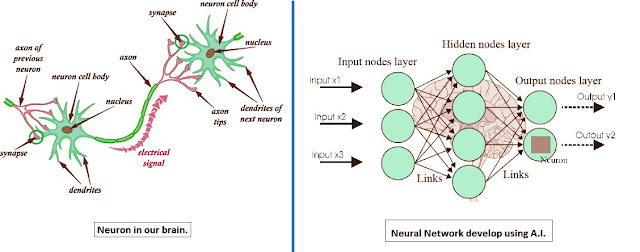Artificial intelligence (AI) is the study of methods to imitate intelligent human behavior. AI is widely heralded as an ongoing “revolution” transforming science and society altogether [1,2]. While approaches to AI such as machine learning, deep learning and artificial neural networks are reshaping data processing and analysis [3], healthcare, transportation and the production chain [4].
National and international organizations (European Commission, Organisation for Economic Co-operation and Development (OECD), UK House of Lords, Singapore Commission) have responded to these concerns by developing ad hoc expert committees on AI, often mandated to draft policy documents in various countries. In 2018 alone, companies such as Google and SAP publicly released AI guidelines and principles.
The advisory council on the ethical use of AI scientific team have announced that results reveal a global convergence emerging around five ethical principles (transparency, justice & fairness, non-maleficence, responsibility and privacy), with substantive divergence concerning how these principles are interpreted, why they are deemed important, what issue, domain or actors they pertain to, and how they should be implemented [5].
Impact of AI: The dimensional of AI is the multi-optional utilization, Its requirements are not only in the clinical healthcare sector, in addition to the education sector, the machinery sector, digital health technology, is becoming seamlessly integrated into our everyday life activities. Therefore, our hopeful understanding of AI growth is an unavoidable scenario in modern globalization. It will help to sustain and facing the challenges in advanced level social requirements/issues.
Integrated concept of AI:
I am writing this news blog to enrich the facts of AI by elaborating and stating the significant needs and make you aware of AI concepts that are going to interact with our daily life activities.
(i) Machine Learning (ML) is a subdivision of AI that focuses on the investigation of algorithms which enable a computer system to perform specific tasks (typically classification or regression) without specific instructions, but instead inferring patterns from data.
All of us are trained to purchase
things from online shopping. So, while browsing the products, it shows some similar
products that you might be interested in. You might have also noticed that the
combination of products (for comparison) is also being suggested. So, have you
ever wondered how does this recommendation would have happen?
This is the progress of machine learning in our life activities. It deals with the following aspects, analyze data, collect data, filter data, train algorithms, test algorithms, use algorithms for future predictions.
(ii) Deep Learning (DL):
In general, a standard neural network consists of many simple, connected processors called neurons, each producing a sequence of real-valued activations. Input neurons get activated through sensors perceiving the environment, other neurons get activated through weighted connections from previously active neurons.
Deep learning is an approach to machine learning that is recognized via neural networks. A neural network is a set of task-specific algorithms that makes use of deep neural networks that are specifically inspired by the structure and function of the human brain. Deep learning sits inside machine learning that sits inside artificial intelligence.
It will help to us by theoretical arguments from circuit theory, intuition, current knowledge, and empirical results neuroscience. DL algorithms can be classified by various types and identified by patterns to provide the desired output when it receives an input.
Figure 2. Neurons in our brain vs an artificial neural network [6].DL applications in face detection, speech recognition and detection, general object recognition, natural language processing, and robotics.
(iii) Data Science: In the 21st Century, the attention of the sexiest job captured by the buzzword “Data Science” by Harvard Business.
Data science is a multiphase term for a whole set of tools and techniques of data inference and algorithm development to solve complex analytical issues/problems. It makes utilize of scientific processes, methods, and algorithms to make it happen. Initially, the goal was to identify hidden patterns in raw data to help a business to enrich and extend their profits.
The data science life cycle has six different phases:
- Discovery
- Data preparation
- Model planning
- Model building
- Communicating results
- Operationalizing
The collective content of Artificial Intelligent (AI) is poised to play a significant role.
AI will be an essential one as well as to say ‘must’ for modern opportunities around the technical or non technical sectors. We are in the potential road of this technology, we must ensure basic artificial intelligence literacy in a multidimensional act for our goals. AI role was an unavoidable pillar in your future scenario leaders, who will drive innovation in this space.
Our findings have highlight the importance of integrating guideline-development efforts with substantive ethical analysis and adequate implementation strategies. This new generation artificial intelligence development plan is intended to be a blueprint for a complete AI ecosystem for global development.
References
- E. J. Topol, Nat. Med. 25, 44 (2019).
- E. J. Emanuel, & R. M. Wachter, J. Am. Med. Assoc. 321, 2281 (2019).
- K. A. Schulman, & B. D. Richman, Engl. J. Med. 380, 900 (2019).
- S. D. Fihn et al. National Academy of Medicine, (2019).
- A. Jobin et al, Nature Machine Intelligence, 1, 389 (2019).
- https://data-flair.training/blogs/artificial-intelligence-vs-machine-learning-vs-dl-vs-ds/
Dr. K. Rajkumar
Central University of Tamilnadu
Thiruvarur, Tamil Nadu, India
Editors
Dr. A. S. Ganeshraja
Dr. S. Chandrasekar
Reviewers
Dr. Y. Sasikumar
Dr. S. Thirumurugan



Ok. Keep it up
ReplyDeleteThank you, warm welcome by SNB
DeleteGood novel
ReplyDeleteGood novel
ReplyDelete